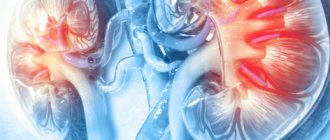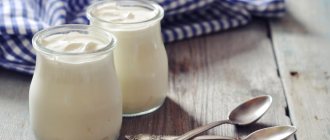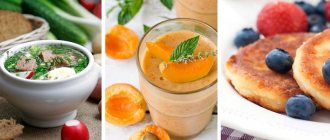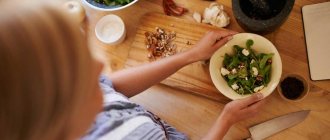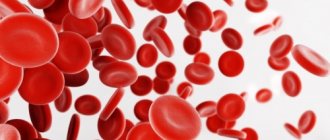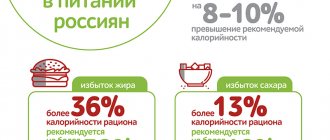Early stage hypercholesterolemia can be treated by adjusting the diet. Recipes for dishes for high cholesterol are varied and simple. A low-calorie diet does not imply strict hunger strikes, leading to moral or physical exhaustion. Most foods are allowed to be consumed, as long as they are prepared correctly.
General principles of diet
The cholesterol diet is not classified as strict, because the list of what you can eat is extensive. The peculiarity of nutrition is that you can only eat products of natural origin. The human body cannot function normally without the intake of fats. At the same time, cholesterol also increases due to excessive amounts of fat. Therefore, to avoid deficiency and excess, it is necessary to consume fats of vegetable origin.
General nutritional recommendations are the following:
- eat small meals 5-6 times a day;
- When purchasing, check the freshness of the goods so as not to eat expired or spoiled products;
- drink plenty of fluids, especially clean water and green tea;
- limit your salt intake, the permissible daily salt intake is 5g;
- reduce the amount of fat;
- Eat as many fresh vegetables and fruits as possible every day;
- eat foods containing fiber.
In order for the diet to bring maximum benefit, it is necessary to strengthen the body with physical activity and walks in the fresh air. In other words, a healthy lifestyle, including diet, is necessary for high cholesterol. With its help you can do it even without the use of medications.
What not to eat
The attending physician gives recommendations on what foods you should not eat so as not to increase the production of “bad cholesterol.” First of all, these include saturated fats, that is, those foods that contain large amounts of fat. Any types of fatty meat are contraindicated. Foods that can increase “bad” cholesterol and that you should absolutely not eat include:
Avocado for high cholesterol
- fried, fatty, overly salty foods;
- sausages and other smoked meats;
- mayonnaise and other sauces with a high percentage of fat;
- chips, crackers, other store-bought junk;
- lamb, pork, other fatty meats;
- fatty poultry cooked fried or smoked with skin;
- lard, especially smoked lard;
- canned fish, caviar, any smoked fish;
- liver and other offal;
- flour, baked goods;
- egg yolks;
- nuts, especially roasted peanuts;
- carbonated drinks.
In fact, the body always shows signs that it does not like fatty or other unhealthy foods. Therefore, it is necessary to listen to your own preferences, the individual reaction of the body. Food should be processed easily; any difficulties in the form of nausea, vomiting, pain, abdominal discomfort, heartburn are an alarming sign.
No ads 1
Fully or partially limited products
Excluded: pork, cooking fats, refined vegetable oil, margarine, butter, duck and goose meat, offal (kidneys, brains, liver), sausages and smoked meats. Fatty fish, fish roe (contains a large amount of cholesterol), crayfish, shrimp, crabs and any canned fish, including cod liver, are prohibited.
You should not consume puff pastry and pastry products, highly extractive meat, fish, or mushroom broths. Cream, fatty cottage cheese and sour cream are not allowed in the diet. Prohibition of consumption of chocolate, full-fat ice cream, products with cream and products with palm and coconut oil. Mayonnaise and ketchup should not be used as sauces.
Limit:
- beef (1-2 times a week);
- red fish;
- egg yolks;
- potato;
- fatty cheeses;
- nuts;
- buckwheat;
- honey.
Table of prohibited products
| Proteins, g | Fats, g | Carbohydrates, g | Calories, kcal | |
Fruits | ||||
| bananas | 1,5 | 0,2 | 21,8 | 95 |
Nuts and dried fruits | ||||
| raisin | 2,9 | 0,6 | 66,0 | 264 |
Cereals and porridges | ||||
| semolina | 10,3 | 1,0 | 73,3 | 328 |
| white rice | 6,7 | 0,7 | 78,9 | 344 |
Flour and pasta | ||||
| pasta | 10,4 | 1,1 | 69,7 | 337 |
Bakery products | ||||
| bagels | 16,0 | 1,0 | 70,0 | 336 |
| bagels | 16,0 | 1,0 | 70,0 | 336 |
| crackers | 11,2 | 1,4 | 72,2 | 331 |
Confectionery | ||||
| jam | 0,3 | 0,2 | 63,0 | 263 |
| jam | 0,3 | 0,1 | 56,0 | 238 |
| candies | 4,3 | 19,8 | 67,5 | 453 |
| pastry cream | 0,2 | 26,0 | 16,5 | 300 |
Ice cream | ||||
| ice cream | 3,7 | 6,9 | 22,1 | 189 |
Cakes | ||||
| cake | 4,4 | 23,4 | 45,2 | 407 |
Chocolate | ||||
| chocolate | 5,4 | 35,3 | 56,5 | 544 |
Raw materials and seasonings | ||||
| ketchup | 1,8 | 1,0 | 22,2 | 93 |
| mayonnaise | 2,4 | 67,0 | 3,9 | 627 |
Dairy | ||||
| cream | 2,8 | 20,0 | 3,7 | 205 |
| sour cream 30% | 2,4 | 30,0 | 3,1 | 294 |
| sour cream 40% (fat) | 2,4 | 40,0 | 2,6 | 381 |
Cheeses and cottage cheese | ||||
| cheese | 24,1 | 29,5 | 0,3 | 363 |
| cottage cheese 18% (fat) | 14,0 | 18,0 | 2,8 | 232 |
Meat products | ||||
| pork | 16,0 | 21,6 | 0,0 | 259 |
| pork liver | 18,8 | 3,6 | 0,0 | 108 |
| pork kidneys | 13,0 | 3,1 | 0,0 | 80 |
| pork fat | 1,4 | 92,8 | 0,0 | 841 |
| salo | 2,4 | 89,0 | 0,0 | 797 |
| beef liver | 17,4 | 3,1 | 0,0 | 98 |
| beef kidneys | 12,5 | 1,8 | 0,0 | 66 |
| beef brains | 9,5 | 9,5 | 0,0 | 124 |
| mutton | 15,6 | 16,3 | 0,0 | 209 |
Sausages | ||||
| smoked sausage | 16,2 | 44,6 | 0,0 | 466 |
| smoked sausage | 9,9 | 63,2 | 0,3 | 608 |
| sausages | 10,1 | 31,6 | 1,9 | 332 |
| sausages | 12,3 | 25,3 | 0,0 | 277 |
Bird | ||||
| smoked chicken | 27,5 | 8,2 | 0,0 | 184 |
| duck | 16,5 | 61,2 | 0,0 | 346 |
| smoked duck | 19,0 | 28,4 | 0,0 | 337 |
| goose | 16,1 | 33,3 | 0,0 | 364 |
Fish and seafood | ||||
| smoked fish | 26,8 | 9,9 | 0,0 | 196 |
| salted fish | 19,2 | 2,0 | 0,0 | 190 |
| Red caviar | 32,0 | 15,0 | 0,0 | 263 |
| black caviar | 28,0 | 9,7 | 0,0 | 203 |
| squid | 21,2 | 2,8 | 2,0 | 122 |
| shrimps | 22,0 | 1,0 | 0,0 | 97 |
| salmon | 19,8 | 6,3 | 0,0 | 142 |
| sturgeon | 16,4 | 10,9 | 0,0 | 163 |
| canned fish | 17,5 | 2,0 | 0,0 | 88 |
| semi-finished fish products | 12,5 | 6,7 | 14,7 | 209 |
| sardine | 20,6 | 9,6 | — | 169 |
| mackerel | 18,0 | 13,2 | 0,0 | 191 |
| cod (liver in oil) | 4,2 | 65,7 | 1,2 | 613 |
| boiled oysters | 14,0 | 3,0 | — | 95 |
| fresh oysters | 14,0 | 6,0 | 0,3 | 95 |
Oils and fats | ||||
| butter | 0,5 | 82,5 | 0,8 | 748 |
| creamy margarine | 0,5 | 82,0 | 0,0 | 745 |
| coconut oil | 0,0 | 99,9 | 0,0 | 899 |
| palm oil | 0,0 | 99,9 | 0,0 | 899 |
| rendered beef fat | 0,0 | 99,7 | 0,0 | 897 |
| cooking fat | 0,0 | 99,7 | 0,0 | 897 |
| rendered pork fat | 0,0 | 99,6 | 0,0 | 896 |
Non-alcoholic drinks | ||||
| cola | 0,0 | 0,0 | 10,4 | 42 |
| lemonade | 0,0 | 0,0 | 6,4 | 26 |
| Pepsi | 0,0 | 0,0 | 8,7 | 38 |
| sprite | 0,1 | 0,0 | 7,0 | 29 |
| * data is per 100 g of product | ||||
Is alcohol allowed
There is an opinion about the benefits of alcohol for high cholesterol. It really has the property of breaking down fats, that is, normalizing lipid metabolism. However, this one beneficial property comes with many times more harmful ones. Like all foods and drinks that enter the body, alcohol passes through the liver, having a detrimental toxic effect on it.
While the alcohol is being processed, toxins destroy the liver lining. If the effect of alcohol is constant, dead cells do not have time to recover. Because of this, the parenchyma or tissue membrane of the liver is destroyed, which leads to serious pathologies.
The destructive effect of alcohol also affects the walls of blood vessels, which is especially dangerous if plaques have already formed due to excess “bad” cholesterol. Because of this, the ability of the vessels to pass blood flow is lost, and blockages form. This threatens the development of cardiovascular diseases.
Considering these factors, doctors agree that alcohol is harmful and therefore belongs to the list of prohibited products. However, a small amount of alcohol consumed occasionally will not cause much harm. The permissible dose for men is 200 g of dry wine or 0.5 liters of weak natural beer. For women it is half as much. It can be used no more than once a month.
To ensure that even occasionally drunk alcohol causes as little harm as possible, it is necessary to choose high-quality, expensive drinks
Advantages and disadvantages
| pros | Minuses |
|
|
Sweets
Sugar consumption if you have high cholesterol should be limited; compliance with this rule raises the most questions for many. Some people are used to eating sweets every day and giving them up forever seems impossible. However, there is no need to do this, since you can find permitted sweet foods.
Flour, baked goods, cakes, pastries, cookies, waffles, and halva are strictly prohibited. These sweets contain not only a lot of sugar, but also fat. Margarine and other fatty ingredients are often added to baked goods. Butter rolls not only increase the amount of “bad” cholesterol, but are also high in calories. Considering that many people develop high cholesterol due to obesity, eating them is strictly prohibited.
To allow yourself some sweets, you need to limit your consumption of pure sugar. It is better to avoid adding it to tea altogether. If this does not work yet, you can replace it with a small amount of honey. It also contains sugar, calories, but it can be added in smaller quantities. Up to 3 tsp per day is allowed. honey
Allowed sweets include the following natural-based products:
- fresh fruits, berries and desserts made from them;
- marmalade;
- paste;
- fruit jelly;
- natural fruit ice cream;
- almonds, walnuts.
In fact, many desserts can be made from these products. For example, many people use low-fat cottage cheese, sour cream, fruit, honey, combining them in different variations.
[node:field_similarlink]
List of prohibited foods for high cholesterol
The basic rule of therapeutic nutrition for high cholesterol is to minimize animal foods in the daily diet.
A general list of foods that you should not eat if you have cholesterol:
- Fatty dairy products, such as sour cream and cream;
- Pork meat;
- Meat by-products (kidneys, liver, brains, stomach, tongue);
- Margarine;
- Egg yolk;
- White bread;
- Baked goods, sweets, confectionery, white and milk chocolate;
- Dishes containing gelatin;
- Mayonnaise;
- Beer and low alcohol drinks.
You should not eat fried foods richly seasoned with animal oil. It is also necessary to avoid eating rich meat broths. The listed products are united by their pathological ability to accumulate cholesterol in the body, as well as the ability to increase the synthesis of endogenous cholesterol.
Mayonnaise is made from egg yolks and has a high fat content. Since it is not an essential product, you can avoid eating it without problems. Pork contains the most cholesterol per 100 grams. In this regard, if you do not eat this meat, there is a positive effect on the normalization of lipid status.
Drinking caffeine accelerates the production of your own cholesterol in the body. It is better to drink herbal tinctures and compotes with a small amount of sugar.
Fish and meat
Only low-fat fish is allowed. Mackerel, herring, and other fatty, salted, smoked fish will only bring harm. Fish caviar will also not be beneficial. Canned food, even natural, in which the fish is cooked in its own juice, is also prohibited. In any case, they contain added preservatives and a lot of salt.
It is important to cook low-fat fish correctly. They can be boiled and soups can be prepared using the resulting broth. Many people like to bake this fish in the oven. Particularly delicious recipes are those in which it is baked in foil, resulting in simmering in its own juices. If you add a few vegetables, you get a complete, tasty dish.
Only lean meat is also allowed. It is best to cook chicken, rabbit, and turkey. They must be boiled, stewed or baked in the oven. Pork, lamb, and poultry with a high fat content, such as duck, are strictly prohibited. So-called “meat products” in the form of sausages, frankfurters, sausages are strictly prohibited. It is also not recommended to eat any offal.
What can you eat
Products that are not on the prohibited list can be eaten. The table below shows the main groups of products, as well as what is prohibited and what is allowed.
| Product group | Can | It is forbidden |
| Milk | Low-fat dairy and fermented milk products | Hard cheese 30% or higher, products with a high fat content |
| Eggs | Squirrels | Yolks |
| Bread | Gray wholemeal rye flour | All other baked goods |
| Cereals | All porridge | — |
| Soups | On non-concentrated broths from lean meats and fish | Fatty, rich |
| Seafood | Low-fat fish, boiled, stewed, baked | Fatty fish, caviar, shrimp, squid, crabs, octopus |
| Meat | Chicken, rabbit, turkey | Other types of meat, offal, sausages and other smoked meats |
| Vegetables fruits | All types prepared with proper heat treatment | Fried potatoes or other vegetables (allowed only to stew, boil, fresh) |
| Mushrooms | All boiled or stewed | All fried, marinated |
When consuming products from the list of permitted ones, it is necessary to take into account the method of preparation. If they are fried or pickled, they become harmful. When eating fruits, you need to consider the amount of sugar they contain. It is better to eat bananas, grapes, figs, and other sweet fruits less often. You can eat citrus fruits, red fruits and berries every day.
No ads 2
Menu for a week with a hypocholesterolemic diet
The menu for a week with high cholesterol levels should consist only of permitted foods, of which there are quite a lot, so creating a daily balanced diet will not require much effort.
Below is a sample menu based on which you can come up with your own meal plan.
Monday:
- breakfast - low-fat cottage cheese (150 grams), green or herbal tea, oatmeal;
- second breakfast - some berries or an apple;
- lunch - low-fat meat or vegetable soup, boiled chicken breast (100 grams), vegetable salad seasoned with a small amount of vegetable oil, a slice of rye black bread;
- afternoon snack - unsweetened yogurt or any fruit;
- dinner - two boiled egg whites, green beans with carrots (stewed or cooked in a double boiler).
Tuesday:
- breakfast - fruit salad, a glass of low-fat fermented milk product, a slice of whole grain bread;
- second breakfast - any fruit or fruit jelly without sugar;
- lunch - baked or steamed fish (150 grams), cabbage salad with carrots, seasoned with balsamic or soy sauce and a small amount of vegetable oil;
- afternoon snack - cheese with rye or whole grain bread and herbs;
- dinner - two stewed beef meatballs with stewed vegetables (peppers, cauliflower, carrots).
Wednesday:
- breakfast - buckwheat porridge and tomato or vegetable juice;
- second breakfast - baked apple with honey, black tea;
- lunch - pureed vegetable soup, a slice of bread with bran, salad with mushrooms (oyster mushrooms or champignons).
- afternoon snack - green tea and one marshmallow;
- dinner - stewed rabbit (250 grams) and Greek salad.
Thursday:
- breakfast - cheesecakes with fruit jam (4 pieces), apple and carrot salad with nuts, a glass of low-fat fermented milk product;
- second breakfast - rosehip decoction, dried fruits (5 prunes and the same amount of dried apricots);
- lunch - gazpacho, boiled veal (150 grams), a piece of gray or whole grain bread;
- afternoon snack - low-fat cottage cheese with raisins and unsweetened compote;
- dinner - durum wheat pasta and baked or steamed fish (150 grams).
Friday:
- breakfast - millet porridge with apple, rosehip decoction;
- second breakfast - any low-fat fermented milk product;
- lunch - seafood and olive salad, a glass of any unsweetened fruit juice;
- afternoon snack - some grapes;
- dinner - boiled beans with spices, tomato and cucumber salad, seasoned with a small amount of vegetable oil.
Saturday:
- breakfast - lazy dumplings, black or green tea;
- second breakfast - tomato with cheese;
- lunch - vegetable hash, a slice of bran or whole grain bread;
- afternoon snack - any two fruits;
- dinner - boiled potatoes, turkey, vegetable salad.
Sunday:
- breakfast - weak coffee with milk, oatmeal and one egg white;
- second breakfast - fruit jelly or fruit ice cream;
- lunch - low-fat chicken soup, boiled or baked veal (100 grams), radish salad;
- afternoon snack - orange or unsweetened yogurt;
- dinner - risotto with mushrooms or spaghetti in tomato sauce, boiled beet salad.
The best oils
Many people are interested in the question of using oils. They are used as a base for cooking, dressing for salads and other dishes. The right choice of oils will not only allow you to follow a diet, avoiding “bad” cholesterol, but also lower the level of cholesterol that is already present in the body.
Vegetable oils are fats, but are beneficial in moderation. The main thing is to buy a high-quality, natural product. Vegetable oil accelerates the passage of atherosclerosis, restores and strengthens blood vessels, and helps improve metabolism. Experts advise adding the following types of oils to your diet:
- Olive. Affordable, tasty product. Healthy fats, which are part of olive oil, accelerate the breakdown of bad cholesterol, they are quickly absorbed, normalizing metabolic processes. It is recommended to consume up to 50 g per day. You can add olive oil to salads, cereals, and marinate meat and fish in it.
- Amaranth. Contains healthy fatty acids, vitamins, antioxidants. It has a beneficial effect on the functioning of the liver, strengthens blood vessels and arteries, and reduces the concentration of cholesterol in the blood. It is recommended to drink 2 tablespoons per day: you can eat it in its pure form, you can add it to salads.
- From flax seeds. Flax seeds are cold pressed and then oil is obtained. Thanks to this processing, all beneficial properties are preserved. This oil has the properties of reducing cholesterol concentrations and making blood vessels and arteries elastic. Its regular use is considered to prevent cardiovascular diseases.
No ads 3
Recipes
Fish baked with vegetables
0.5 kg pike perch fillet, 2-3 tomatoes, zucchini, eggplant, lettuce pepper, onion, 2 cloves of garlic, 2 tbsp. spoons of vegetable oil.
Roughly chop the onion, garlic, zucchini and eggplant. Mix the vegetables, season with pepper, vegetable oil, Provençal herbs and marinate for 30 minutes. Also grease the fish fillet with oil and season with herbs. Place the prepared vegetables on foil, place the fish fillet on top and cover with small tomatoes. Bake for 15-20 minutes.
Fish baked with vegetables and cheese
Hake fillet 500 g, carrots, onions, tomatoes, low-fat cheese 50 g, vegetable oil.
Cut the fillet into portions, marinate in spices and allspice. In a frying pan, simmer finely chopped onion and grated carrots, adding a little vegetable oil. Place the hake fillet in a small dish, cover with a layer of stewed vegetables and slices of chopped tomato. Bake for 20 minutes, sprinkle with grated cheese at the end and place in the oven for another 3 minutes.
Baked chicken breast
Chicken fillet 300 g, fresh vegetables and herbs to taste, olive oil 1 tbsp, milk 0.25 cup, garlic.
Lightly beat the chicken fillet and marinate in olive oil with garlic, rosemary and milk for half an hour. Place in pan and bake. Season the finished dish with salt and serve with any fresh vegetables.
Chicken fillet with green beans
One chicken fillet, 300 g beans, pepper, spices, olive oil, salt.
Cut the chicken fillet into cubes and simmer until half cooked in a saucepan with a little water. Add frozen green beans, spices to taste and simmer under the lid until the chicken is completely cooked. Before serving, add herbs, olive oil and a little salt. Serve warm.
Especially useful products
Some foods not only help get rid of “bad” cholesterol, but are especially useful for normalizing the production of “good” cholesterol. They are not only possible, but must be included in the diet. These include:
- Avocado. This product is rich in phytosterols - substances that can reduce the concentration of bad cholesterol in the blood. It is recommended to consume half the fruit daily. You can add it to salads or eat it separately.
- Oatmeal. Porridge contains a large amount of fiber - a useful substance recommended for consumption. Eating oatmeal for breakfast is a good habit for those watching their cholesterol levels.
- Cabbage. The advantage of white cabbage is the availability and low cost of this product. It is also rich in fiber and other healthy components. Cabbage should be on the menu every day - at least 100 g. It can be stewed, fermented, or eaten fresh.
- Legumes. They contain magnesium, which helps remove “bad” cholesterol from the walls of blood vessels. Useful for already developed atherosclerosis and for its prevention. Baked potatoes are also rich in magnesium.
Nuts are especially useful for high cholesterol: cashews, pine nuts, pistachios, walnuts, but not many, due to their calorie content - about a nut per day.
When deciding how to eat if you have high cholesterol, you need to understand the general principles of diet therapy and exclude prohibited foods from your diet. Without these measures, no treatment option will be effective. Thanks to the extensive list of permitted foods, you can eat nutritiously, tasty, and enjoy your food.


